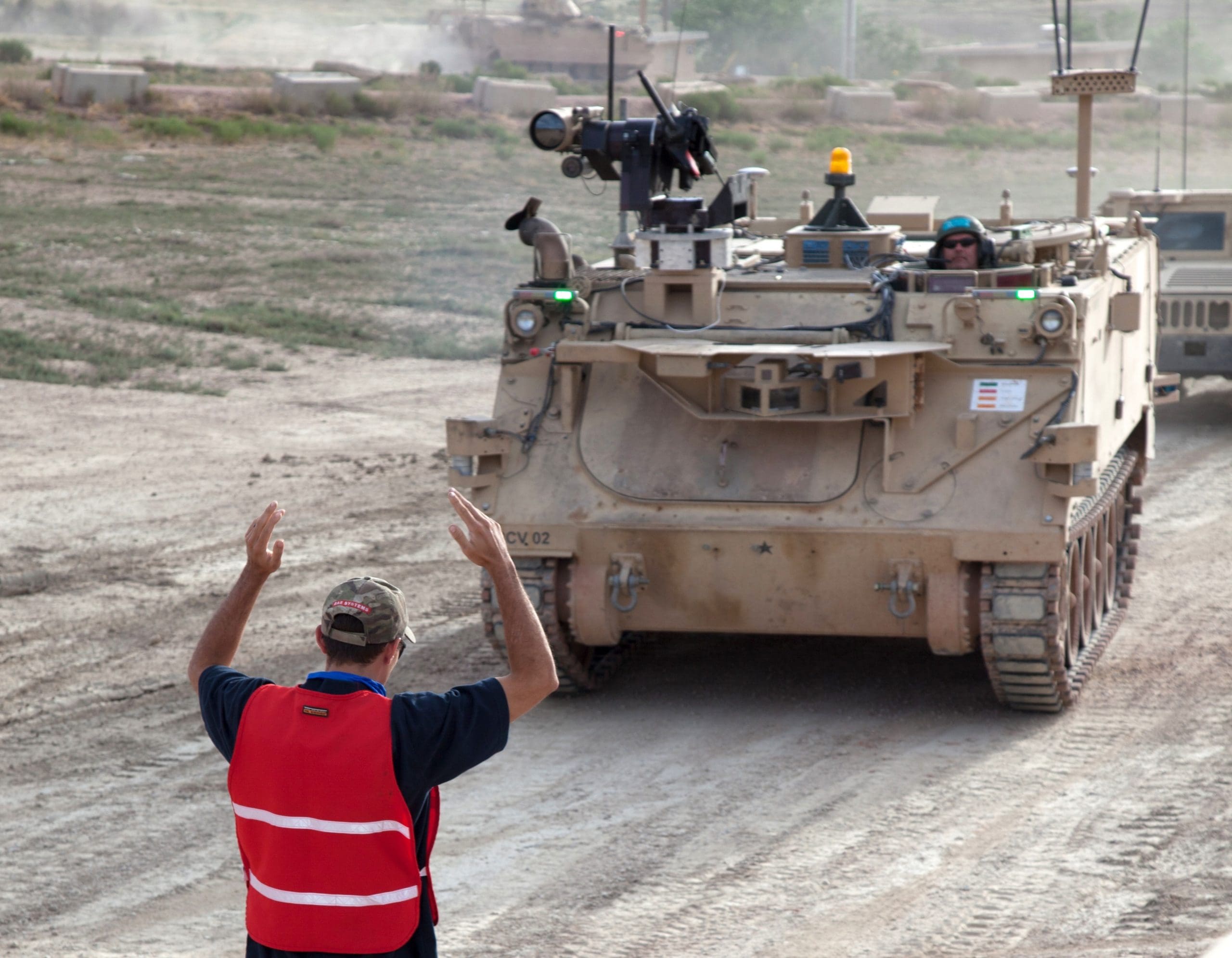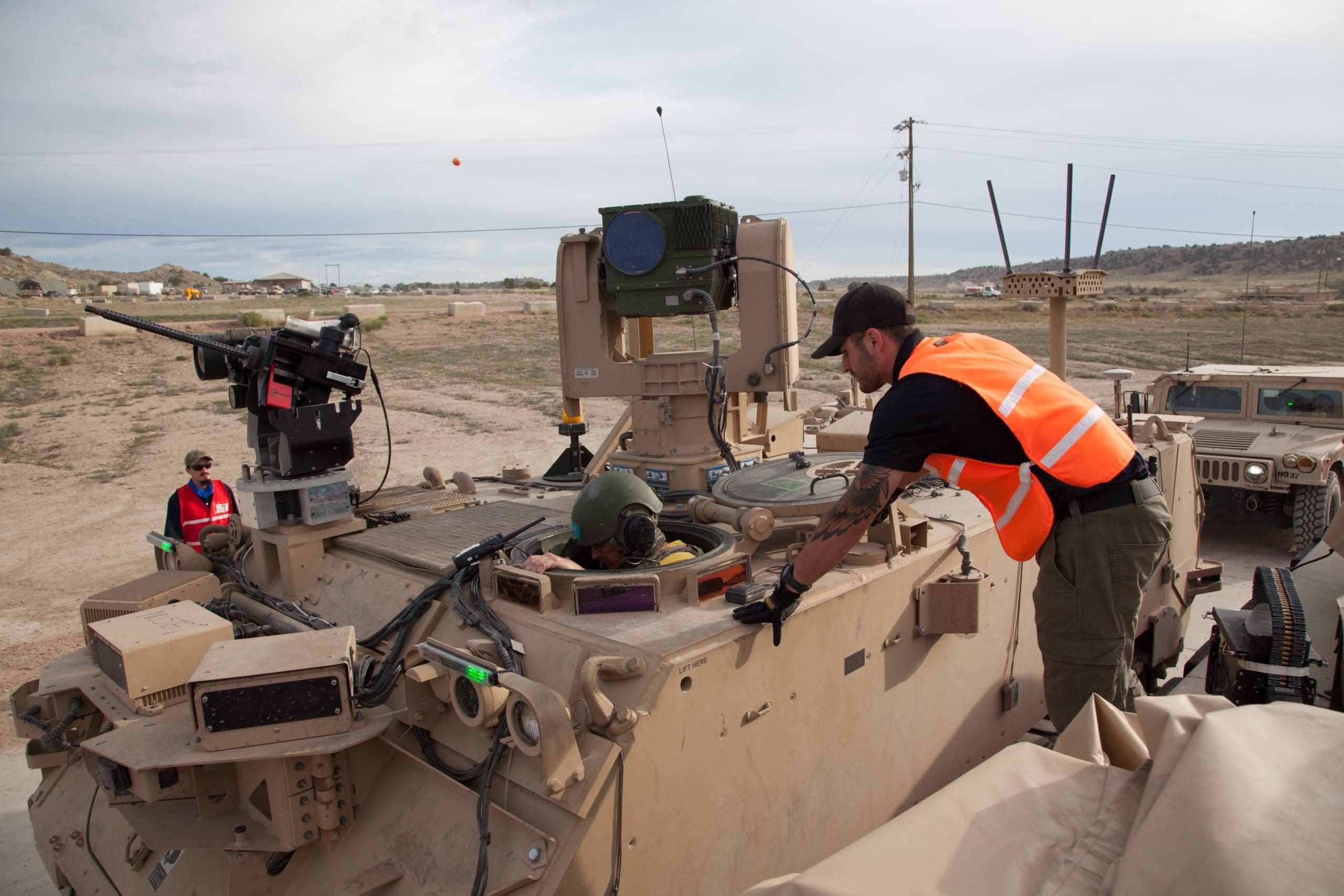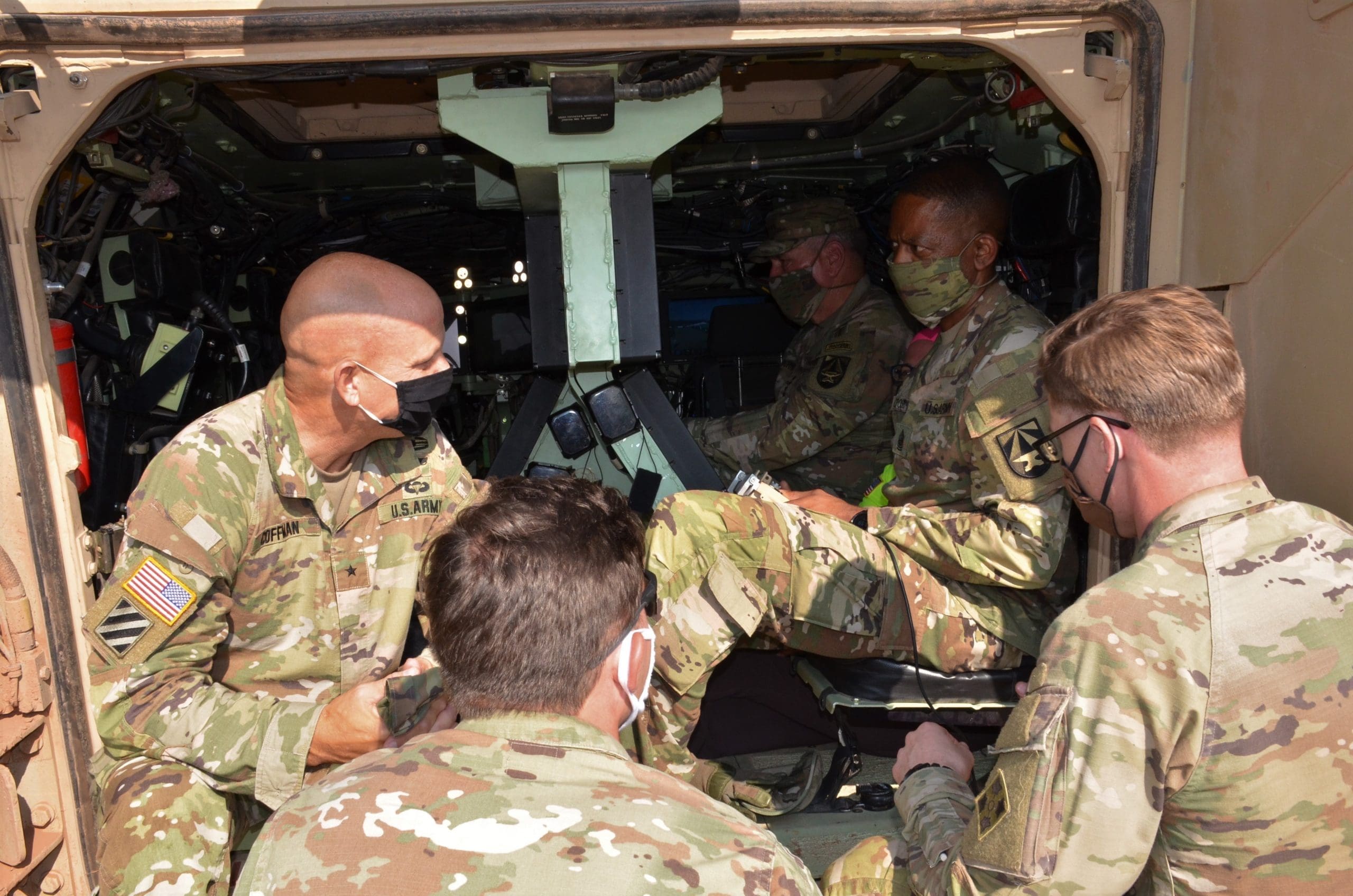FORT CARSON, Colo. — The Army’s collection of armed robotic combat vehicles showcased an “exceptional” ability to identify enemy positions after about a month of testing, but more development is still needed to improve battlefield precision, said Brig. Gen. Richard Coffman.

Coffman, director of the Next-Generation Combat Vehicle Cross-Functional Team, praised the capabilities of the four robotic combat vehicles, or RCVs, during the platoon live-fire exercises here.
Soldiers from the 4th Infantry Division used two modified Bradley Fighting Vehicles, called Mission Enabling Technologies-Demonstrators, or MET-Ds, to control and maneuver the RCVs to determine whether the autonomous vehicles increased the lethality and efficiency of ground units.
“The ability [to spot enemies] was exceptional, because that reduces the risk on our Soldiers and allows us to remain in a covered and concealed position and make decisions,” Coffman said during a media conference call Thursday.
The MET-Ds, which are manned with six Soldiers, have 360-degree situational awareness cameras, a remote turret with a 25 mm main gun, and enhanced crew stations with touchscreens. The RCVs are M113 surrogate platforms that also have 360 cameras and fire 7.62 mm machine guns.
From inside the MET-Ds, Soldiers were able to control the RCVs up to a 2,000-meter range, but struggled to extend that distance in dense forest regions, Coffman said.

Developers plan to add more features to the vehicles in Phase II of testing, including a new radio tether to increase the operating range, an unmanned aerial vehicle and a target recognition capability based on synthetic data. Phase II, which is scheduled for the first quarter of fiscal year 2022 at Fort Hood, Texas, will feature three platoons of robotic vehicle with control vehicles.
“This is about commanders on the battlefield and giving them more decision space and reducing the risk on our men and women,” Coffman said. “We go into the nastiest places on earth. And these robots are absolutely going to do that in the future. We’re not there 100% yet.”
A third party will evaluate the technical and tactical performance of the operating crews and robotic vehicles, as well as the overall success of the experiment. The findings will then be briefed to the service’s senior leaders.
After the evaluation of Phase II’s results, Coffman said the Army will decide whether to continue testing.
Room for improvement

Soldiers testing the autonomous vehicles noted that greater sensory capabilities must be developed for the controlled vehicles to serve as unmanned replacements.
“Right now we don’t have sensors that can tell whether we’re coming across a little puddle that we can just drive through or whether that puddle is 8 feet deep and going to bog us down,” said Jeffrey Langhout, director of the Army Combat Capabilities Development Command’s Ground Vehicle System Center. “A robot can navigate its own way and it relies on the sensors that it has to keep from driving into ditches and all kinds of problems. We certainly have a long way to go on that.”
Sgt. Matthew Morris, assigned to 3rd Armored Brigade Combat Team, 4th ID, said the lack of downward visibility hindered operation of the RCVs. He said the vehicle’s ability to see down steep terrain must improve to prevent the vehicle from overturning.
When a human drives a vehicle into soft sand they instinctively know to shift to a lower driving gear and the RCVs must develop that sensitivity, Coffman said.
“For me specifically, I think that the ability to see downward once we approach certain inclines and declines would probably be an astute upgrade that would push us forward in the right direction,” Morris said, adding the vehicles must increase its audio signature to increase communication abilities with crew members.
Vehicle operator Sgt. Scott Conklin, who is also with 3rd ABCT, said that the two-person crew could handle the increased workload, but the frenetic pace of operating with the 360 cameras made the RCVs challenging to operate.
Coffman said regardless of how the program evolves, he said humans will retain a level of autonomy over the robotic combat vehicles.
“We don’t want a fully autonomous vehicle,” he said. “We don’t want the machine deciding. We want very specific rules of what that machine will and will not do. The humans are in charge.”
By Joseph Lacdan, Army News Service


Silly Nonsense. “Improves Legality” only in a controlled environment with ready access to Field Support Representatives. The economic burdens of trying to retain a fleet of these vehicles in the face of a LSCO against a peer or near peer threat will be prohibitively high. The chances of of peer threats “hacking” the connection between the MET-Ds and the GCVs has never been adequately addressed. We lack the organic subject matter expertise to maintain the mechanical functionality of our combat vehicles fleets let alone the science fiction silliness of robot tanks. And the GWOT has definitively proved that unmanned and antonymous vehicles do not win wars and will never replace “boots on the ground”. And finally lets not forget that the German Army during WWII had the largest most technologically advanced combat vehicles in the world. But this didn’t help them against the Mass of cheaper, simpler, and more reliable American and Soviet combat vehicles.
I’m an Active Duty Armor Officer and I am not a fan of the NGCV program. Its another waste of money. The Eurotank Program and the Land 400 Program are much better acquisition programs proving our allies with vehicles they can actually use to actually win wars.
Just my 5 cents.
Agree with your insights but also believe you are making much more if this program than what the Army is trying to do with it.
It’s an experiment to find what isn’t known. When Patton was driving around with wheeled vehicles experimenting on what mobile warfare could be he was very far from making it a reality. Technology had almost 20 years to deliver on the capability he was looking for.
They identified some key issues that reinforce the point that technology isn’t there and we still need people or smarter machines e.g. maintaining situational awareness in a 360 degree arc, simply being able to look down, figuring out how deep puddles are etc.).
We can’t be afraid of technology or autonomy. That didn’t do well in the Air Force as the fighter mafia fought drones (which impacted our ability to be supported for a bit). On the other hand, it’s guys like you that are going to apply reality to the dreamers that think we’ll be able to completely remove the Soldier. Yep, maintenance is a thing and the enemy definitely has a vote.
Our enemies aren’t playing. It would be a shame if T14A4 Armatas were taking out our scouts in the offense or IDing our troops in the offense for targeting for other systems. They are working on AI without human decision making. We need to figure out how to do it better and keep humans in the loop. Totalitarianism tends to keep internal criticism in check.
This is great and reminds me of many of the lessons we learned during FCS (yeah, that abortion) computer simulations that weren’t well documented and are relearning today.
As it applies to a dismounted force being enabled by an unmanned ground vehicle (UGV), a phenomenon I observed was that when the Infantry was equipped with a capable “UGV” they treated it like a crew served weapon and didn’t want to unnecessarily risk it.
This ran counter to what was expected because at times leaders would use men to do recon/fight vs. using the UGV. That’s the opposite of why we wanted UGV’s! You know, minimize the risk to the soldier.
When asked why, leaders explained that after the enemy learned how lethal (through firepower or ISR capability) the UGV’s were, they prioritized targeting them.
After losing them, the unit lost a key asset which became very expensive in men or material as they tried to complete the mission. Remember, over time the enemy is becoming more lethal as weapons get better.
So here we were with units leading with grunts vs. the robot because they were afraid to lose the robot and not have it for the critical times when it was absolutely necessary to minimize casualties or complete the mission.
Before criticizing the leaders’ decision, it came to me that it made sense. We don’t typically lead with the M240.
The lesson? Don’t make the UGV so lethal the leader doesn’t want to risk it for fear of not having it for when it would most save lives.
This is the thought I have when I read stories about a combination ammo/casualties/weapon carrying UGVs. When you only give one per platoon it makes it real hard for the leader to figure out what role to put it in as priorities change. Give the unit too many and then you get loaded down with the logistics of it all especially when terrain limits you.
Interesting problems. Experiments like these help us solve them.